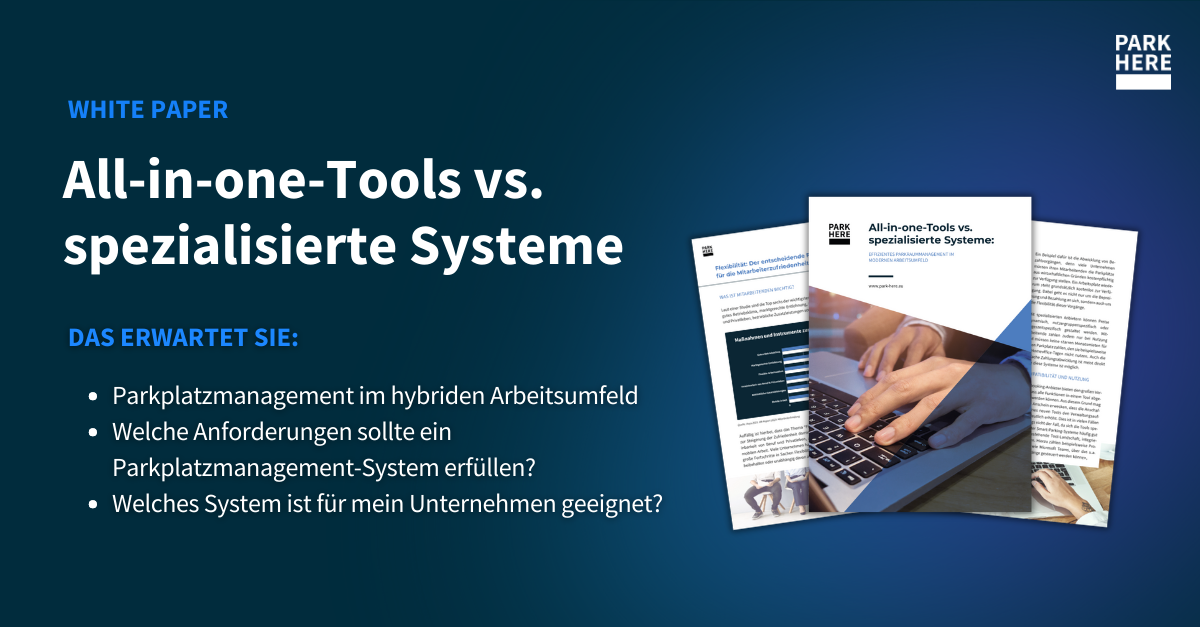Workplace Reservation: how the Office World is Changing
At the beginning of the industrial age, offices were large rooms in which a great many employees sat at strictly symmetrically aligned desks with little space between them. This changed in the mid-1960s: In Germany, the idea of the "office landscape" was born, conceived by the Schnelle brothers. Additional furniture and the use of partitions made the previously classroom-like office space more homely. In America, this trend was taken up and space segmentation was taken to the extreme – which finally produced the infamous "cube farms" towards the end of the 70s.In the 80s and 90s, which were characterised by mergers and acquisitions, the cube farms became a symbol of interchangeability. As a counter-trend, the open-plan offices that are still known today emerged towards the end of the 1990s. They are characterised by open spaces, table islands and visual contact between employees. The open-plan concept scores above all with economic advantages: It enables flexible room design, and it allows very efficient heating, air conditioning and lighting due to the lack of partitions.
But it also has serious disadvantages: The high noise level makes concentrated work difficult, and the free lines of sight give many employees a feeling of being monitored. In addition, every third employee in an open-plan office complains about poor air quality.
Read our free white paper All-in-one tools vs. specialised systems to learn more about workplace reservation.

The Days of Open-Plan Offices are Numbered
The biggest disadvantage of the open-plan concept, however, is a medical one: The risk of infection with viruses and bacteria is significantly higher in an open-plan office than in individual offices. Long before the Corona pandemic, the German Association for Office, Seating and Contract Furniture (bso) declared that the financial advantages that employers derive from the more economical use of space in open-plan offices are offset by a higher rate of absenteeism.The Corona virus made the high risk of infection even clearer: At the beginning of the pandemic, for example, a call centre employee in South Korea infected 94 colleagues in a single working day. This corresponded to an office workforce share of 42 percent. Several studies that were subsequently carried out on the infection rate in offices confirmed the potential danger of enclosed spaces without demarcation. Infectious diseases spread within these in a very short time. Trend research institutes such as the US consulting firm Gartner are therefore certain: The days of open-plan offices are numbered.
Digital transformation: Flexibilisation of office work The fact that the open-plan office concept is a discontinued model is not only due to the Corona pandemic. A Harvard study from 2018 found that open-space offices are dysfunctional in terms of communication, as they tend to hinder rather than promote exchange between employees. Team or even cross-departmental discussions hardly take place in open-plan offices, and communication is limited to conversations with the person sitting next to you. In the age of New Work, in which unrestricted exchange across departmental and hierarchical boundaries is highly valued, this is a serious flaw. In addition, office work has changed significantly as a result of digital transformation.
Classic clerical work is declining; it is increasingly being replaced by automatic systems. In return, project-oriented development work is becoming increasingly important – but this does not actually require continuous presence at the workplace. Corona has clearly shown that in many industries a large part of the work can be done at home. The office work of the future will therefore be characterised by a mixture of concentrated work from home and interactive work in the office – and thus also by a spatially and temporally flexible work structure. Against this background, open-plan offices with permanently assigned workplaces are no longer up to date.
Adaptable New Office World
However, this does not mean that offices are generally obsolete. Personal meetings at the workplace will continue to play a role in the future, but they will take place on a case-by-case basis. What can be done at home will also be done at home. People only come to the office for certain tasks. Accordingly, companies' demands on office space are also changing.Modern offices must have an open space with flexible partition systems that allow workplaces to be set up and modified as required. This allows for the creation of various work options, from individual workstations for routine tasks to project islands for teamwork and "think tanks" for highly concentrated work. Employees can then freely choose both their office attendance time and the workplace that suits their respective task.
More Efficient Use of Office Space Thanks to Desk-Sharing
But if the desks in an office are no longer occupied every day, there is a risk that the expensive office space will not be used efficiently. In fact, this is the case in most open-plan offices anyway – regardless of whether work is carried out according to New Work directives or not. A study by DZ-Bank shows that classic office workplaces are only used on an average of 190 days a year (out of 250 working days per year). On the remaining days, they remain free due to holidays, flexitime, illness, business trips or home office days.If you also take part-time work into account, then an office employee is only at their workplace for over 65 percent of their working time. The solution to the utilisation problem: Desk-sharing. With this organisational system, the workplaces in an office are not assigned to a specific employee, but are allocated daily – or weekly or monthly – as required. This allows a company to manage with fewer workplaces than the workforce comprises (as a rule, 20 percent of workplaces can be saved). Accordingly, less office space needs to be rented.
Absolutely Sensible: a Workplace Reservation System
This desk-sharing, also known as "flexible office", is actually not new. As early as the beginning of the 2000s, numerous large corporations introduced non-territorial working with fewer workplaces than employees, for example IBM, Microsoft, Siemens, Deutsche Bank and Lufthansa. In the absence of efficient reservation systems, however, problems often arose: A large proportion of employees felt under pressure from the compulsion to have to look for a free space first thing in the morning. No wonder – anyone who has to walk through the office with a drawer unit at the start of work and look for a space (and may end up finding only an unpopular spot) will hardly feel comfortable at work.Surveys also revealed that an uncertain office workplace significantly reduces employees' sense of belonging to the employer. Therefore, transparent resource management is essential when implementing the desk-sharing concept. Digital technology has now produced intelligent room booking systems that allow employees to book workplaces, conference rooms and even parking spaces from home. All bookings are handled easily via software with an associated app. Employees can see at a glance which spaces are available for booking for which time. This ensures that there are no double bookings and that the available spaces are used optimally.
Conclusion
Flexible working is on the rise – not only because of the Corona pandemic. The virus has accelerated the upheaval in many companies, but even without Corona, the office world would be in a state of change today. Because: When everything is networked and data can be accessed from anywhere, the fixed workplace in the office loses its relevance. The future of knowledge work lies in a mixture of individualised and collective work; it includes both home office and flexibilised office work. It is therefore obvious that office space will have to be used differently in the future than it is today – especially as the classic open-plan concept is not compatible with adequate infection protection anyway.However, companies and employees have learnt that not everyone has to be in a certain place at a certain time in order to do a good job. In addition, flexible working is also highly economical, as it is associated with lower office space costs, less time wasted commuting and more employee satisfaction (and thus also with more employee productivity). One of the key factors in the implementation of flexible working is desk-sharing – in combination with a digital workplace reservation system. This form of work organisation will sooner or later have a widespread impact on the world of work.
Would you like to learn more about smart parking? In our Download Center you will find further information, success stories and tips. Put it in first gear and come and have a look!

If you would like to receive regular information from ParkHere, please fill out the form and stay informed about the latest mobility topics.
